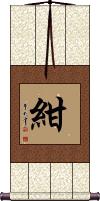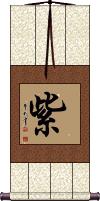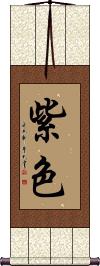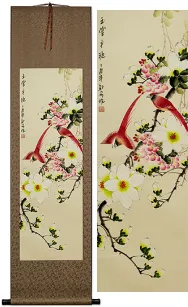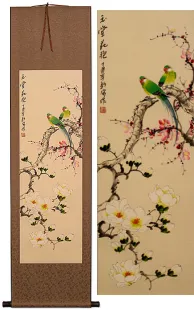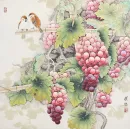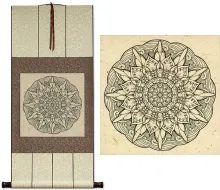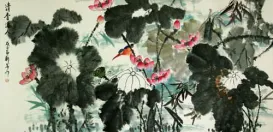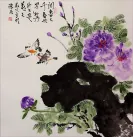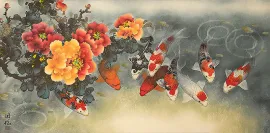Many custom options...
And formats...

Violet Color in Chinese / Japanese...
Buy a Violet Color calligraphy wall scroll here!
Personalize your custom “Violet Color” project by clicking the button next to your favorite “Violet Color” title below...
Violet Color
紺 is a slightly-rare Chinese and old Korean title for the color violet or purple.
In Japanese, this refers to a very deep blue color.
Purple / Violet
紫 is the single-character Chinese, Japanese, and old Korean title for the color violet/purple.
The difference between violet and purple is not really distinguished in Asian languages. However, sometimes a character for “light” is added to the front of this one, which might be closer to the meaning of violet.
Purple / Violet
(2 character version)
紫色 is the two-character Chinese, Japanese, and old Korean title for the color violet/purple.
The second character means “color,” so this literally means “violet color.”
It's more common to add the “color character” in Asian languages than to say “color” after the name of the color in English. Therefore, this is a natural way to express “violet” in Asian languages.
This in-stock artwork might be what you are looking for, and ships right away...
Gallery Price: $72.00
Your Price: $39.88
Gallery Price: $120.00
Your Price: $49.88
Gallery Price: $72.00
Your Price: $39.88
Gallery Price: $108.00
Your Price: $59.88
Gallery Price: $108.00
Your Price: $59.88
Gallery Price: $200.00
Your Price: $69.88
Gallery Price: $340.00
Your Price: $188.88
Gallery Price: $286.00
Your Price: $158.88
Not the results for violet color that you were looking for?
Below are some entries from our dictionary that may match your violet color search...
| Characters If shown, 2nd row is Simp. Chinese |
Pronunciation Romanization |
Simple Dictionary Definition |
紫色 see styles |
zǐ sè zi3 se4 tzu se shiiro / shiro しいろ |
More info & calligraphy: Purple / Violet(noun - becomes adjective with の) purple; violet; (female given name) Shiiro |
堇色 see styles |
jǐn sè jin3 se4 chin se |
violet (color) |
紫羅蘭色 紫罗兰色 see styles |
zǐ luó lán sè zi3 luo2 lan2 se4 tzu lo lan se |
violet (color) |
The following table may be helpful for those studying Chinese or Japanese...
| Title | Characters | Romaji (Romanized Japanese) | Various forms of Romanized Chinese | |
| Violet Color | 紺 绀 | kon | gàn / gan4 / gan | kan |
| Purple Violet | 紫 | murasaki | zǐ / zi3 / zi | tzu |
| Purple Violet | 紫色 | murasakiiro murasakiro | zǐ sè / zi3 se4 / zi se / zise | tzu se / tzuse |
| In some entries above you will see that characters have different versions above and below a line. In these cases, the characters above the line are Traditional Chinese, while the ones below are Simplified Chinese. | ||||
Successful Chinese Character and Japanese Kanji calligraphy searches within the last few hours...
